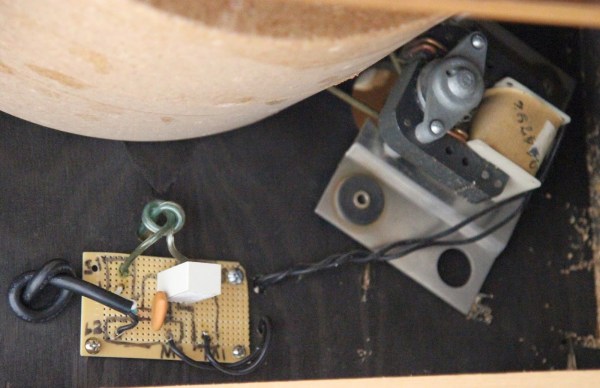Since humans first starting playing with electricity, we’ve proven ourselves pretty clever at finding ways to harness that power and turn it into motion. Electric motors of every type move the world, but they are far from the only way to put electricity into motion. When you want continuous rotation, a motor is the way to go. But for simpler on and off applications, where fine control of position is not critical, a solenoid is more like what you need. These electromagnetic devices are found everywhere and they’re next in our series on useful mechanisms.
snubber2 Articles
Organ Donor Gives Up A Leslie Speaker
It was about ten years ago that [Richard] received an old musical organ. Moving to a new house meant it would be cumbersome to move the organ with him, so he opted to harvest some interesting components instead. Specifically, he kept the Leslie speaker.
A Leslie speaker is a special kind of speaker mechanism that creates a tremolo effect as well as a vibrato effect. You can hear this effect in [Richard’s] video below. Simple effects like this would be easy to do on a computer nowadays, but that wasn’t the case several decades ago. Before digital electronics, musical effects were often performed by analog means. [Richard’s] Leslie speaker is a small speaker behind of a Styrofoam baffle. The baffle spins around the speaker which changes the reflection angle of the sound, producing the musical effect.
[Richard] tried hooking this speaker up to other musical instruments but found that turning off the electric motor created an audible pop over the speakers. To remedy this, he build a simple “snubber” circuit. The circuit is just a simple 240 ohm resister and a 0.05 uF capacitor. These components give the transients a path to ground, preventing the pops and clicks when the motor is powered up. Now [Richard] can use this classic piece of audio equipment for newer projects. Continue reading “Organ Donor Gives Up A Leslie Speaker”












